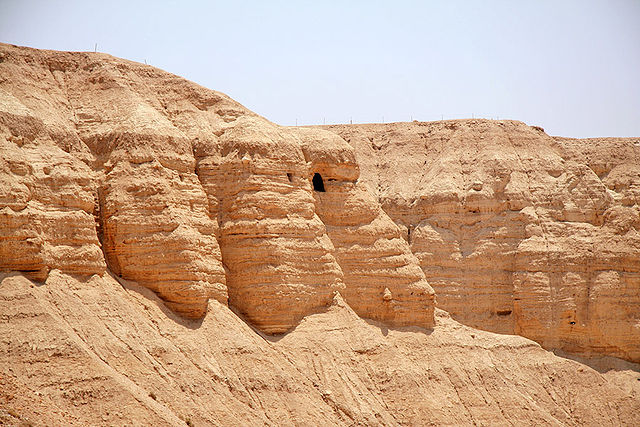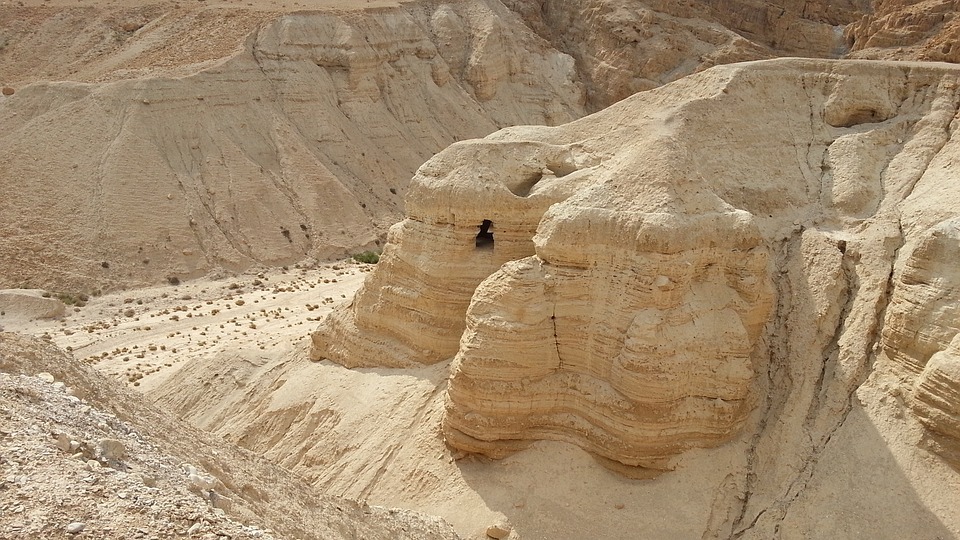Nahal Qumran runs through the Judean Desert and runs through a dramatic gorge towards the Dead Sea by the ancient village of Qumran.
Qumran is famous as the home of a small sect of devout yet monastic Jews at the end of the Second Temple. The hermits devoted much of their time to writing scrolls that they hid in nearby caves. The scrolls were discovered many years later – the Dead Sea Scrolls.
Qumran National Park
Qumran National Park is situated at the foot of the vertical cliff of the Judean Desert, rising up from the shores of the Dead Sea. During the 2nd century B.C.E., the Essene sect arrived in Qumran, where they settled and wrote what could be the Dead Sea Scrolls.
The Qumran Caves are a series of caves (some of which are artificial), where the Dead Sea Scrolls were discovered during the mid-1940s.
After the 1967 war, the Israel Nature and Parks Authority began to manage the site, when Israel occupied the West Bank and took over Qumran.
Aside from the impressive archaeological finds, Qumran has incredible stories surrounding it. It makes a perfect place for both history lovers and adventure-seekers. It provides a great starting point for a hike and a popular rappelling course.
Points of interest:
- The archaeological site itself.
- The exhibition of archaeological artifacts as well as the presentation of Qumran’s history.
- Guided tours.
Hiking in Nahal Qumran
Qumran is named after the river bed (wadi) which floods with water during the winter rainy season. There is a good hike in Qumran where you can climb up to the top of the cliffs, along the plateau with spectacular views of the Dead Sea, the go down at Ein Feshka. The trek takes about four hours and can be done by families or groups of friends.
Exploring Nahal Qumran
Nahal Qumran is accessible from the Qumran National Park – just follow the green trail markers. The climb is fairly short but can be a little challenging in places, but the views from the top are extremely rewarding. Following the trail west into the desert hills reveals some dramatic scenery. The wadi itself is dry almost all year round, but after a wet winter such as in 2012 there is some water and some spectacular flowers show their colors.
Getting to Nahal Qumran
Access from the Qumran National Park or a (two-car trail) from Route 90 near Ein Fashcha ending at the Qumran National Park.
If you’re driving from Jerusalem, the journey to Qumran takes about half an hour; then, you may descend the 1170 meters to the northern shore of the Dead Sea.
Another alternative is to take a jeep and ride across the desert to the site.
For more photos and a video see the Nahal Qumran Album

